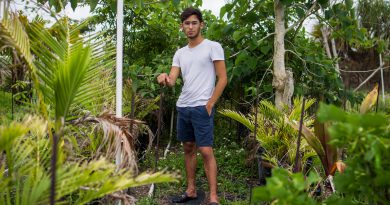Activism At Home And Beyond
When people hear the term water protector and Standing Rock, North Dakota comes to mind. Last summer in Standing Rock, protests and water protector camps were made on the reservation for peaceful resistance against the pipeline that was being built there, which would endanger the drinking water of millions. People from all over the world, many with indigenous roots, such as myself, joined. I slept in freezing temperatures during December, witnessing historic unity between 600 tribes and their allies. The camps were crushed in January, but other camps have spread.
The Sabal Trail Pipeline is being built through three states. A water protector camp is only an hour drive from the Everglades on Seminole and Miccosukee territories. A woman nicknamed Sioux Z, who I met in Standing Rock, was severely injured by police there. I was able to get in touch with Sheri Lewis who started Camp Standing Rock Florida (renamed United Indigenous Camp) with Sioux Z.
In late March, Lewis was a panelist at an environmental event held by Campus Greens, a club at Wolfson Campus I used to be a part of. She was also at Standing Rock. She stayed throughout November and then came again in January–– just missing me.
Lewis explained what it means to be a water protector, “It comes from being a mother, connection with creation, thinking of children. My last child was a water birth. Protecting mother earth, all humanity, protecting all life.”
A walk through the Everglades was led by Natives, and also Lewis who has Native American roots as well. I was one of approximately 30 who participated until we reached Miami.
According to Lewis, the Everglades are a prehistoric ecosystem which is precious, and sacred to Natives. The pipeline, and such paths, would endanger the Everglades.
“First in Naples, Feb. 10, they wanted to build a concrete bike path through the Everglades for 80 miles; our walk primarily was bringing attention to this,” said Lewis about ongoing efforts with the Naples and Miami City Councils to protect the Everglades. “Naples decided in February, if Miami went along, they would cancel these plans, so on April 4, after we had marched into the city council in Miami, they decided to cancel the plans. On May 12, Naples went along with it.”
To conclude, I think it is a small world, especially for activists. It’s also a journalist’s responsibility to shed light on this. The 80-mile long and 51,200 acre path they would have built, could have cleared the way for Sabal, but it barely got the coverage, the effort to prevent it or the connection to Standing Rock. This is an issue that students should look at.




